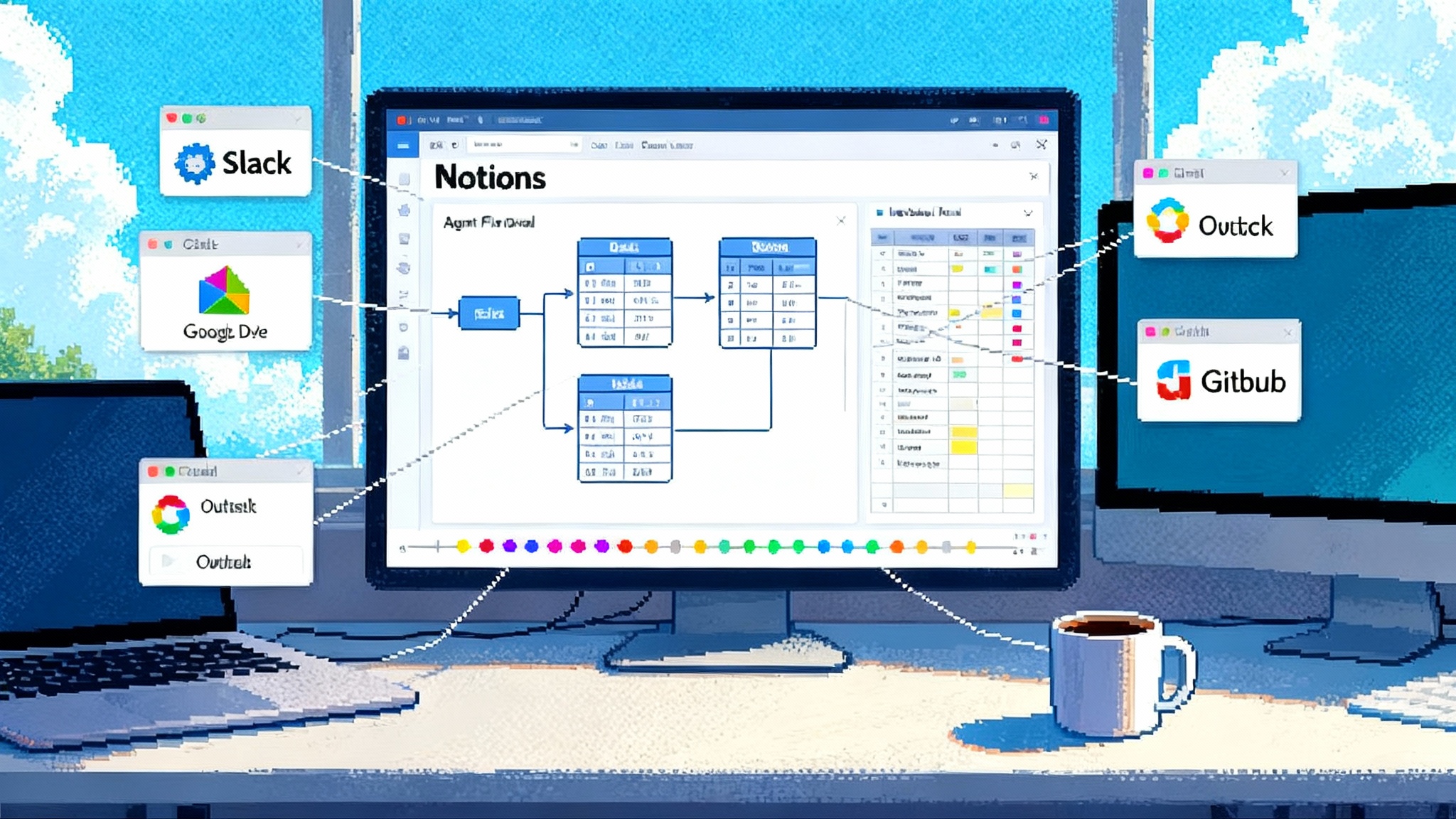Voice Agents Go Live: Phones Become the New Runtime
OpenAI’s Realtime API is now production-ready with native SIP calling, turning phone lines into a first-class runtime for real agents. Here is what changed under the hood, what to build first, and how to ship safely.

The week voice agents stopped being demos
On August 28, 2025, OpenAI took its Realtime API to general availability and added phone calling over Session Initiation Protocol, often called SIP. The change sounds small but it is a real inflection point. The model now speaks and listens natively, can call real phone numbers, and can drive tools while the caller is still mid-sentence. In practical terms, that is the difference between a clever demo in a browser tab and an agent that can sit in the call queue, pick up, and help customers without supervision. You can read the release notes and pricing in OpenAI’s post: Introducing gpt-realtime and production updates.
This is not an isolated move. Cloud providers and communications platforms have been racing to close the gap between lab-grade voice models and the real constraints of the phone network. Twilio and other carriers provide SIP trunking at global scale. Microsoft has documented SIP routes for the Azure OpenAI Realtime API. Google has put a native audio model into Gemini Live, which points in the same direction. Put it together and voice-native agents are no longer a toy. They are a deployable system component. For a broader view of how agents move from reasoning to action, see Reasoning LLMs in production and how standards are forming in the open agent stack. If you are thinking about workplace rollouts, compare with workspaces as the AI runtime.
What changed under the hood
The shift is architectural. Early voice agents were two separate systems glued together: a speech-to-text recognizer that produced a transcript and a text-to-speech synthesizer that read out the language model’s reply. That pipeline works for scripted prompts but it struggles in production. Every handoff adds latency and error. Prosody gets lost. Barge-in, the ability for a caller to interrupt while the agent is speaking, becomes difficult. Tool calls stall while waiting for the transcript.
A native-audio agent flips the design. Speech in, tools in the middle, speech out, all within one conversational loop. The model hears you at audio frame granularity, not in full sentences post-processed by a recognizer. It can decide to call a function before you finish your thought, then resume speaking with the result. It maintains a consistent voice and can modulate pacing and tone to match context. This sounds subtle, but on the phone it feels like the difference between a voicemail tree and a person who can listen while walking to the filing cabinet.
Under production load, details matter. With a single end-to-end agent, you get:
- Lower and more stable latency. There is no extra hop to a separate recognizer and no downstream rebuild of prosody. The agent can start a response while you finish your sentence.
- Better barge-in behavior. The same model controls both ears and mouth, so it can pause itself when you interject and resume without audible artifacts.
- Fewer compounded errors. Misheard words do not need to be perfectly written into a transcript first. The model can rely on intent, confidence, and context rather than on a brittle literal transcription.
- Durable persona. The voice characteristics and pacing remain consistent across turns because synthesis is integrated into the same stateful session.
- Direct tool orchestration. Tool calls are decisions inside the same loop, not downstream events triggered by a transcript parser. That improves correctness and keeps the call snappy.
If you operate a contact center, think of it like collapsing three vendors into one brain with a clear contract. Fewer moving parts, less finger-pointing, and a shorter path to a good experience.
Why speech→tools→speech beats STT/TTS pipelines
To make this concrete, consider four scenarios that break classic pipelines.
-
Cold opens on noisy lines. A caller starts with “Hi, yeah, calling about the renewal that was supposed to, I think it was last Friday, the 15th, and my address changed.” In a transcription pipeline, the recognizer tries to produce punctuation and disfluency cleanup while the model waits. A native-audio agent can bookmark that an intent is likely “billing renewal,” call the billing tool with best guesses while still listening, and then confirm the address once it returns a record.
-
Barge-in after a policy disclosure. Scripted systems often read an entire paragraph before they can accept input. Native-audio agents can short-circuit, acknowledge, and continue. That single behavior change improves customer satisfaction in a measurable way.
-
Smart silence. On the phone, silence has meaning. People pause to look up a policy number or to think. Agents that model timing natively can wait without sounding stuck, or speak to fill the gap with relevant guidance. That is much harder when the only signals are text tokens.
-
Emotion and urgency. Native audio captures pitch and tempo, which can guide the agent to escalate sooner. “I smell gas right now” should trigger tools faster than “I would like an account balance.” Because the same session produces the speech output, the agent can mirror calm and brevity in urgent moments.
In all four, the win is not just accuracy. It is control. The model reasons over acoustic features, words, and tools inside one loop, which lets you write cleaner policies and get predictable behavior.
The phone network is the new runtime
For a decade, conversational AI lived inside a chat tab. Now the runtime is a phone call, and the platform surface includes carriers, trunks, and compliance rules. There are new knobs to learn and they matter.
- Session Initiation Protocol connects your agent to the public switched telephone network. SIP lets you receive inbound calls to a number and place outbound calls at volume. Platforms like Twilio, Telnyx, Vonage, and enterprise PBX systems all speak SIP.
- Media streams traverse the globe. Expect jitter, loss, and variable codecs. Native-audio models that tolerate packet loss and resume gracefully will save you hours of brittle debugging.
- Call control becomes part of your prompt. Warm transfer to a human, hold, mute, and conference are now tool calls, not contact center glue code.
If you run a help desk, imagine your agent as a new colleague who sits on the same extension as everyone else. It answers the easy stuff, escalates fast, and updates the ticket without being asked. The difference is that it can do that at 2 a.m. without yawning.
What unlocks right now
Three classes of products are now within reach for small teams, not just big labs.
-
24/7 triage that is not a maze. Start with one or two high-volume intents where policy is clear. For a bank, that might be card replacement and balance checks. For healthcare, appointment scheduling and directions. For roadside assistance, tow dispatch intake. The agent verifies identity, collects the minimum fields, triggers the tool, and confirms the result. Human agents handle edge cases and quality audits.
-
Outbound campaigns that respect the listener. Modern dialing laws and call labeling rules are strict for good reason. Native-audio agents let you build campaigns that open with authentication, check consent, and only then deliver value, such as a precise renewal quote or an appointment slot. Because calls are real conversations, you can detect negative sentiment and exit quickly. That saves brand equity and reduces complaints.
-
Voice-first apps that do one job well. Think of a voice concierge that books a repair, a field worker assistant that logs time by calling a number, or an in-store kiosk that calls a central agent when a shopper asks for help. The agent does not need a web app. The phone number is the product.
A quick blueprint for production call handling
You can build an initial system in a week, then spend a month hardening it. A clear blueprint helps.
-
Choose the first two intents. Rank by frequency and clarity. Write the policy in plain sentences. For each intent, list the minimum data fields, the tool calls, and success criteria.
-
Set the system prompt for the voice agent. Include tone, legal disclosures, escalation rules, and a strict policy on what to do when uncertain. Add an explicit instruction to summarize decisions as structured tool calls for logging.
-
Wire SIP to your agent session. If you are deploying in Azure, the official guide shows how to route SIP calls directly into a Realtime session and back out to the caller: Use Realtime API via SIP.
-
Define tool contracts. Keep them small and deterministic. Examples: get_customer_by_phone, place_order, schedule_appointment, start_transfer_to_queue. Return structured results with a display string for what the agent should say.
-
Implement warm transfer. The agent should be able to summarize the case in one sentence and pass the call to a human with context. Practice this handoff. It is your safety net and improves trust immediately.
-
Add guardrails early. Limit what the agent can say about money movement or sensitive changes unless identity is verified. Block certain phrases. Cap maximum time on hold. Always offer the option to speak to a person.
-
Test with synthetic and real calls. Simulate bad lines and accents. Track p95 barge-in latency, first-tool-call latency, transfer rate, and abandonment rate. Record what the agent should have done in each miss and fix the policy.
-
Measure cost and quality together. Audio tokens are billed by input and output. Carrier minutes are billed by duration. Plot both against customer satisfaction and handle time. Optimize for total value, not just cost per minute.
-
Plan for operations. Decide who reviews transcripts, how frequently to retrain policies, and how to roll back when something breaks. Create a runbook for your on-call engineer.
This is straightforward engineering, not magic. The trick is to keep the surface small, learn quickly, and harden only what the data proves you need.
Compliance and identity are the short-term frontier
When the runtime moves to the phone network, compliance is not a checklist at the end. It is the spine of the design.
-
Recording disclosures. In many United States jurisdictions, consent rules differ. Your agent must announce recording if you record, and you should store whether consent was obtained. If a customer declines, disable logging or redact audio features accordingly.
-
Dialing laws and caller labeling. Respect do-not-call registries and consent records. Authenticate outbound numbers with the right attestation and monitor call labeling to avoid being flagged as spam. Limit time-of-day windows and retry schedules by region.
-
Data minimization by default. Only collect what you need, which reduces risk and shortens calls. Redact payment data from logs. Hash identifiers when feasible.
-
Auditable tool calls. Treat every tool call as a structured event. Log inputs, outputs, and the spoken summary. This makes investigations, refunds, and customer requests far easier to resolve.
Identity is the second pillar. You can combine:
- Number based recognition as a weak factor.
- One time codes over voice or text as a strong factor.
- Caller name delivery data from carriers to cross check expectations.
- Optional voice biometrics as a soft factor with fallback to human assistance.
The goal is not to make callers jump through hoops. It is to pick the lightest method that satisfies the policy for the action at hand, then cache trust for the rest of the call.
On-device handoff is coming fast
Today’s production agents will mostly run in the cloud, connected to carriers through SIP. Over the next year, expect a split brain design. A small on-device model handles wake words, privacy sensitive short tasks, and offline flows. The cloud agent takes over for complex tasks with tool calls and compliance constraints. The handoff should feel invisible. Think of it like a hybrid car that chooses the right motor based on speed and terrain.
For mobile apps, that means a dialer that can keep context when the network flakes and then resynchronize. For cars, kiosks, and field devices, it means basic control and safety prompts locally, with full intelligence and tool access when the link is solid. The design principles are the same. Keep the policy central, cache minimal state on device, and be explicit about which side owns which decision.
The economics in plain numbers
Pricing looks different when the model listens and talks directly. You will pay for audio input tokens and audio output tokens on the model side, plus carrier minutes and any platform fees. Two levers are worth watching.
-
Speaking ratio. Agents that speak too much inflate output token cost and irritate callers. Encourage shorter confirmations and faster tool calls. You can usually cut spoken tokens by 20 percent with better prompts and tool returns that include concise display strings.
-
First tool call time. The earlier your agent calls a tool, the less idle talk is needed. That reduces cost and increases trust. When agents front-load the first action, they tend to resolve faster or escalate sooner, both of which are cheaper than meandering.
Do not guess. Instrument a dozen calls, chart cost components, and decide whether to optimize for speed, containment, or customer satisfaction. Most teams find a sweet spot where the agent handles the top two intents cheaply and escalates everything else.
What to build this quarter
If you are evaluating this wave, do not boil the ocean. Ship something real.
- Pick two intents and write a one page policy for each. Include identity steps, tools, and wording.
- Stand up SIP connectivity into a Realtime session. Keep the greeting and transfer clean. Practice barge-in and silence handling.
- Add warm transfer to a human queue with a one sentence summary. People forgive an agent that knows when to ask for help.
- Launch to a small caller segment. Measure transfer rate, barge-in latency, and customer satisfaction. Iterate twice.
- When it works, add outbound for only one use case that has clear consent, such as a scheduled appointment reminder with a smart reschedule flow.
This plan forces you to exercise the full loop without betting the contact center on day one.
The bigger shift
When apps moved from desktop to mobile, the home screen became the new front door. As voice agents move to production, the phone network becomes the runtime and the phone number becomes an addressable interface. That unlocks simple, valuable experiences where the right answer is a call, not an app. The companies that win will treat voice agents like a new team member with a job description, a training plan, and a set of tools, not like a widget.
The technical leap was getting audio in and out of one brain that can think and act. The operational leap is running that brain against the rules of the real world. Now that the models speak and listen natively, the rest is down to product discipline. Start small, wire to tools you trust, respect the network you are standing on, and measure everything. The line between a call tree and a capable colleague is finally thin enough to cross.








